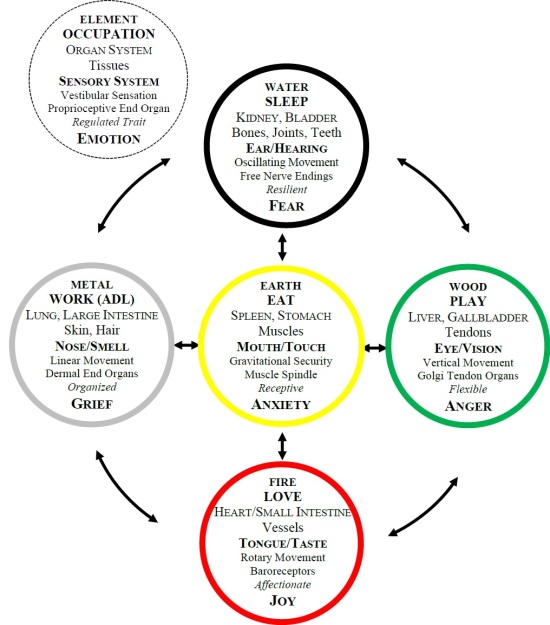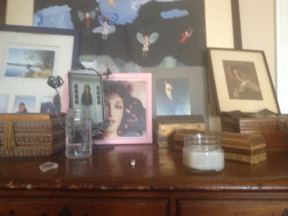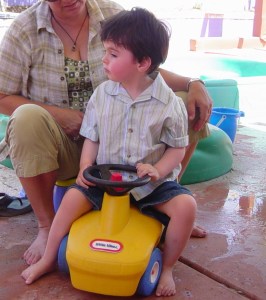I attended the American Occupational Therapy Association annual conference in Chicago recently and presented a poster on Occupational Therapy from a Traditional Chinese Medicine paradigm. Lots of people came by and talked to me and seemed interested in the topic. I decided to share it on my blog. It’s pretty long so this post is the background and the information on the poster. Next post will have some application to practice and a case study.
I am testing out a new blog format – since I hope to really focus on this blog as a means to spread information about sustainable health – affordable, simple, effective. Let me know what you think about the blog and also what you think about the content.
Background
The past decade has led to an explosion of research demonstrating the role stress plays creating the inflammation underlying every chronic disease familiar to occupational therapy.4, 7, 10, 16, 19 Much research focuses the interplay between the gastrointestinal and nervous systems.2, 10, 13, 18, 23 through neuro-hormonal pathways related to the vagal nerve.24 Eating serves as a meta-occupation involving every Area of Occupation either directly as in the case of food preparation, shopping, cleaning, and farming or indirectly in the case of Play/Leisure, Rest/Sleep, Work, & Social Participation.21 Sharing food has set human evolution on a path to our present day, and expanding our understanding of this complex ADL beyond the realm of eye-hand and oral-motor Performance Skills offers occupational therapists a powerful tool for life-changing health outcomes in almost every chronic disease we treat.
The past decade has also led to increased awareness about ancient healing traditions such as Ayurveda (from India) and Traditional Chinese Medicine (TCM). These have a long history of success and current research that backs up their claims to improved health outcomes. Yoga (from the Ayurvedic practices of India) and acupuncture (from TCM) have received a great deal of interest. These healing traditions have detailed, complex views of health that integrate body, mind (sensory), and spirit throughout 2500 years of written documentation.16
TCM views all forms of disease as energetic disharmony and uses six “pillars” of treatment: Qigong (movement); Tuina (touch/massage); lifestyle/psychology; food; herbs; and acupuncture.16 The first four of these pillars fall within the scope of occupational therapy practice. Like TCM occupational therapy also values the importance of self-regulation (body, senses, and emotions) to the healing process. TCM’s Five Element Theory offers a way to organize how to apply interventions using a paradigm that has worked for 5000 years.16 Modern quantum physics informs us that everything is energy and provides the means for understanding how these ancient healing traditions succeed in manifesting better health outcomes.
Each of the Five Healing Occupations in the graphic aligns with the element associated with that direction on a compass point: Earth in the center; Wood to the East; Fire to the South; Metal to the West; Water to the North. TCM uses these natural elements to understand relationships between all aspects of body, mind and spirit (energy or qi). The adept practitioner then applies her knowledge of these interactions to bring the person back into harmony so the body can heal itself.16 Stress (physical or psychic) leads to inflammatory processes resulting in physical ailments. Reducing stress, reduces inflammation and allows the body to heal.3, 8, 10, 15, 17, 23, 24
A Brief Description of the Five Healing Occupations
EAT
Our food has changed dramatically over the past few decades. Consumption of sugar has doubled since 1945. We have gone from “3 square meals a day” to constant snacking; from eating with others, to eating alone. All of these changes correlate with increases in chronic disease, many of them associated with the inflammatory role sugar and flours have on tissues.2, 8, 10, 13, 17, 18, 23
PLAY
Nothing comes close to topping Play as the greatest of stress-relievers, and this reason may account for the fact that all mammals play – both young and old.4, 7, 8, 14, 19, 20, 22, 27 Evidence also points to play behavior in other vertebrate classes –reptiles, birds, and fish.1
LOVE
Many physiological research studies have cited oxytocin, the love hormone, as pivotal in encouraging relationships and relieving stress. Decades of psychological research with both primates and humans has documented the importance of social bonding to emotional regulation.3, 7, 8, 11, 19, 20, 22, 24
WORK
We all engage in habitual tasks that provide food, clothing and shelter for ourselves, our families, and our communities. Inability to do so creates stress and leaves us hungry, cold, and often alone. Occupational therapists have always understood the importance of these activities of daily living.8, 21, 28
SLEEP
Even more ubiquitous than play, sleep affords living creatures a chance to regenerate, refresh, and process the day’s events. Lack of sleep, or interrupted sleep affects all aspects of our physiology and behavior.3, 8, 10, 12, 24

A Brief Description of the Graphics Key
Element
TCM uses an understanding of the properties of and relationships between the Five Elements to diagnose and treat disharmony (illness).3, 16 Like most healing traditions which use an elemental approach (i.e. all of them I have studied over the past 30 years) they arrange these elements around the compass points (East, South, West, North). The elements may move around the compass, and their relationships may change in subtle ways, but the practitioner always begins with an understanding of the natural world and the laws which govern it. To put these elements into modern scientific terms: Earth=Matter; Fire=Energy; Wood=Organic Time; Metal=Cosmologic Time; Water=Space.
Organ Systems
TCM relates the five elements to five Organ Systems. These include both the physical organ itself as well as its energetic relationships to body, mind and spirit. Physical illness manifests through the body, but treatment encompasses the mind and spirit. TCM considers the first organ listed as Yin (or nutritive) and the second as Yang (or movement/bowels). 3,16
Tissues
Each element and organ system has corresponding tissues. These also manifest disharmony and aid the practitioner in determining a root cause (from external pathogens, habits of thinking, emotions, or spiritual relationships to the natural world – including other people). 3,16
Sensory System
TCM ascribes each of five senses to an element and organ system. The graphic lists the sensory organ first and its primary sensory response second. Diagnosis considers disturbances in the various senses, and treatment often utilizes these sensations as a way to restore harmony to the body,3,16 much like Occupational Therapy views Sensory Integration.
Vestibular Sensation
TCM ascribes metabolism function across all organ systems,16 in a manner similar to Occupational Therapy’s understanding of the multiple interconnections with the vestibular system and how it acts to balance an individual. I have taken the liberty of ascribing each of five movement patterns to the five elements. Gravitational security depends on a healthy relationship with the pull of gravity on our planet, Earth. Vertical movement mimics the push of plants upward toward the sun. Rotary movement corresponds with the slight spin of blood in the vessels as well as the intense, energetic sensation of spinning. Linear movement and acceleration/deceleration corresponds to the structured response of crystalline bonds in metals. Oscillating movement corresponds to the wavelike, floating motion of water.
Proprioceptive End Organs
These discreet tissues of sensation reside in the tissues ascribed by TCM to each element and organ system.16 As an occupational therapist designing interventions that promote self-regulation (i.e. harmony) understanding when and where to use particular sensory applications depends on knowing how to activate these sensory organs.6
Regulated Trait
Again I have taken the liberty of using terms familiar to occupational therapists, and relating them to characteristics of each element/organ system. Receptivity recalls the important work of the Stomach in receiving food. Flexibility relates to healthy Liver function.16 Affection and the demonstration of affection binds us together in social relationships. Organization mimics the molecular order of metal. Resilience relates to the TCM understanding of Kidney as the body’s “energy checking and savings account”. 16
Emotion
TCM associates each element and organ system with a particular emotion. When people express these emotions and let them go, the body releases stress and stays healthy. When an emotion becomes habitual (stagnation), then it often becomes the seed from which disharmony and illness grow. TCM always considers and treats these emotions.
References
- Burghardt, G. M. (2005) The genesis of animal play: Testing the limits. MIT Press, Cambridge, MA.
- Cortese S, Morcillo, Peñalver C. (2010) Comorbidity between ADHD and obesity: exploring shared mechanisms and clinical implications. Postgrad Med. Sep:122(5): 88-96. Review.
- Cowan, SS. (2012). Fire child, water child: How understanding the five types of ADHD can help you improve your child’s self-esteem and attention. Oakland, CA: New Harbinger Publications, Inc.
- Gray, P. (2013). Free to learn: Why unleashing the instinct to play will make our children happier, more self-reliant, and better students for life. New York: Basic Books.
- Gray, P. (2011) The decline of play and the rise of psychopathology in childhood and adolescence. American Journal of Play, 3, (4) 443– 463.
- Greene, D., & Roberts, S. (2016). Chapter 6: Utilizing the sensory environment: integrating physics into sensory interventions. Kinesiology: movement in the context of activity (3rd ed.). St. Louis, MO: Elsevier.
- Greenspan, S. (2006). Engaging autism: helping children relate, communicate and think with the DIR floortime approach. Cambridge: Da Capo Lifelong Books.
- Herbert M, Weintraub K. (2010) Harvard University. The autism revolution: Whole body strategies for making life all it can be. New York: Ballantine Books.
- Hilton, JC; Seal, BC. (2007). Brief report: comparative ABA and DIR trials in twin brothers with autism. J Austism Dev Disord, 37 (6): 1197-1201.
- Hyman, M. (2016) Eat fat, get thin: Why the fat we eat is the key to sustained weight loss and vibrant health. New York: Little, Brown and Company.
- Houghton K, Schuchard J, Lewis C, Thompson CK. (2013). Promoting child-initiated social-communication in children with autism: Son-Rise Program intervention effects. Journal of Communication Disorders. 46 (5–6), 495-506.
- Immordino-Yang, M.H., Christodoulou, J.A. & Singh, V. (2012). “Rest is not idleness”: Implications of the brain’s default mode for development and education. Perspectives in Psychological Science, 7(4), 352-364.
- Katz, R., Edelson, M. (2015). The Healthy Mind Cookbook: Big-Flavor Recipes to Enhance Brain Function, Mood, Memory, and Mental Clarity. New York: Ten Speed Press.
- Kaufman, R.K. (2014). Autism Breakthrough. New York: St. Martin’s Press.
- Louv, R. (2008). Last child in the woods: saving our children from nature-deficit disorder. Chapel Hill, NC: Algonquin Books of Chapel Hill.
- Lu, N., & Schaplowsky, E. (2015). Digesting the universe: A revolutionary framework for healthy metabolism function. New York: Tao of Healing Publishing.
- Lustig, R. H. (2012). Fat chance: Beating the odds against sugar, processed food, obesity, and disease. New York: Hudson Street Press.
- Lustig, RH. (2006). The ‘skinny’ on childhood obesity: how our western environment starves kids’ brains. Pediatric Annals, 35(12): 898-902, 905-7.
- Newsom, C. R., Archer, R. P., Trumbetta, S., & I. Gottesman, I. I. (2003). Changes in adolescent response patterns on the MMPI/ MMPI-A across four decades. Journal of Personality Assessment, 81, 74– 84.
- Newton, E., & Jenvey, V. (2011). Play and theory of mind: Associations with social competence in young children. Early Child Development and Care, 181, (6) 761– 773.
- Occupational therapy practice framework: Domain and process, 2nd (2012) AJOT, 62(6), 625-680.
- Pellis, S. M., Pellis, V. C., & Bell, H. C. (2010). The function of play in the development of the social brain. American Journal of Play, 2, 278– 296.
- Perlmutter, D., & Loberg, K. (2015). Brain maker: The power of gut microbes to heal and protect your brain – for life. New York: Little, Brown and Company.
- Porges, S. W., (2011). The polyvagal theory: Neurophysiological foundations of emotions, attachment, communication, and self-regulation. New York: W.W. Norton & Company, Inc.
- Tscharnuter, I. (2002). Clinical Application of Dynamic Theory Concepts According to Tscharnuter Akademie for Movement Organization (TAMO) Therapy. Pediatric Physical Therapy, 14, 29-37.
- Satter, E. (2008). Secrets of feeding a healthy family: orchestrating and enjoying the family meal, 2nd ed. Madison: Kelcy Press.
- Verghese, J., Lipton, R.H., Katz, M.J., Hall, C.B., Derby, C.A, Kuslansky, G., Ambrose, A.F., Sliwinski, M., Buschke, H. (2003). Leisure activities and the risk of dementia in the elderly. N Eng J Med. 348:2508-2516. June 19, 2003.
- Wilson, T.D., Reinhard, D.A., Westgate, E.C., Gilbert, D.T., Ellerbeck, N., Hahn, C., Brown, C. L., Shaked, A. (2014). Just think: The challenges of the disengaged mind. Science, 345 (6192):75-77.
 A cardiologist prescribed cardiac catheterization for a 70 year-old woman, with type 2 diabetes, after detecting a congenitally small heart valve while prepping her for surgical removal of a skin cancer. This Five Element approach interprets insulin resistance blocking receptivity to sweetness, obstructive earth qi. Her heart valve symptoms indicate fire qi disturbance. The skin cancer manifested as a disturbance in metal qi. She worked full time running her own business, teaching drama to children by putting on musicals. This had required sufficient organization, social participation, and creativity to succeed and grow the business over more than three decades, indicating ongoing exercise of metal, fire, and water qi respectively. Fear (water qi) prevented her from carrying out the catheterization procedure, even though her son rescheduled his own business plans and flew into New York City from the West Coast to be with her on three separate occasions. She also failed to complete a fourth solo appointment.
A cardiologist prescribed cardiac catheterization for a 70 year-old woman, with type 2 diabetes, after detecting a congenitally small heart valve while prepping her for surgical removal of a skin cancer. This Five Element approach interprets insulin resistance blocking receptivity to sweetness, obstructive earth qi. Her heart valve symptoms indicate fire qi disturbance. The skin cancer manifested as a disturbance in metal qi. She worked full time running her own business, teaching drama to children by putting on musicals. This had required sufficient organization, social participation, and creativity to succeed and grow the business over more than three decades, indicating ongoing exercise of metal, fire, and water qi respectively. Fear (water qi) prevented her from carrying out the catheterization procedure, even though her son rescheduled his own business plans and flew into New York City from the West Coast to be with her on three separate occasions. She also failed to complete a fourth solo appointment. Case Study #1
Case Study #1

